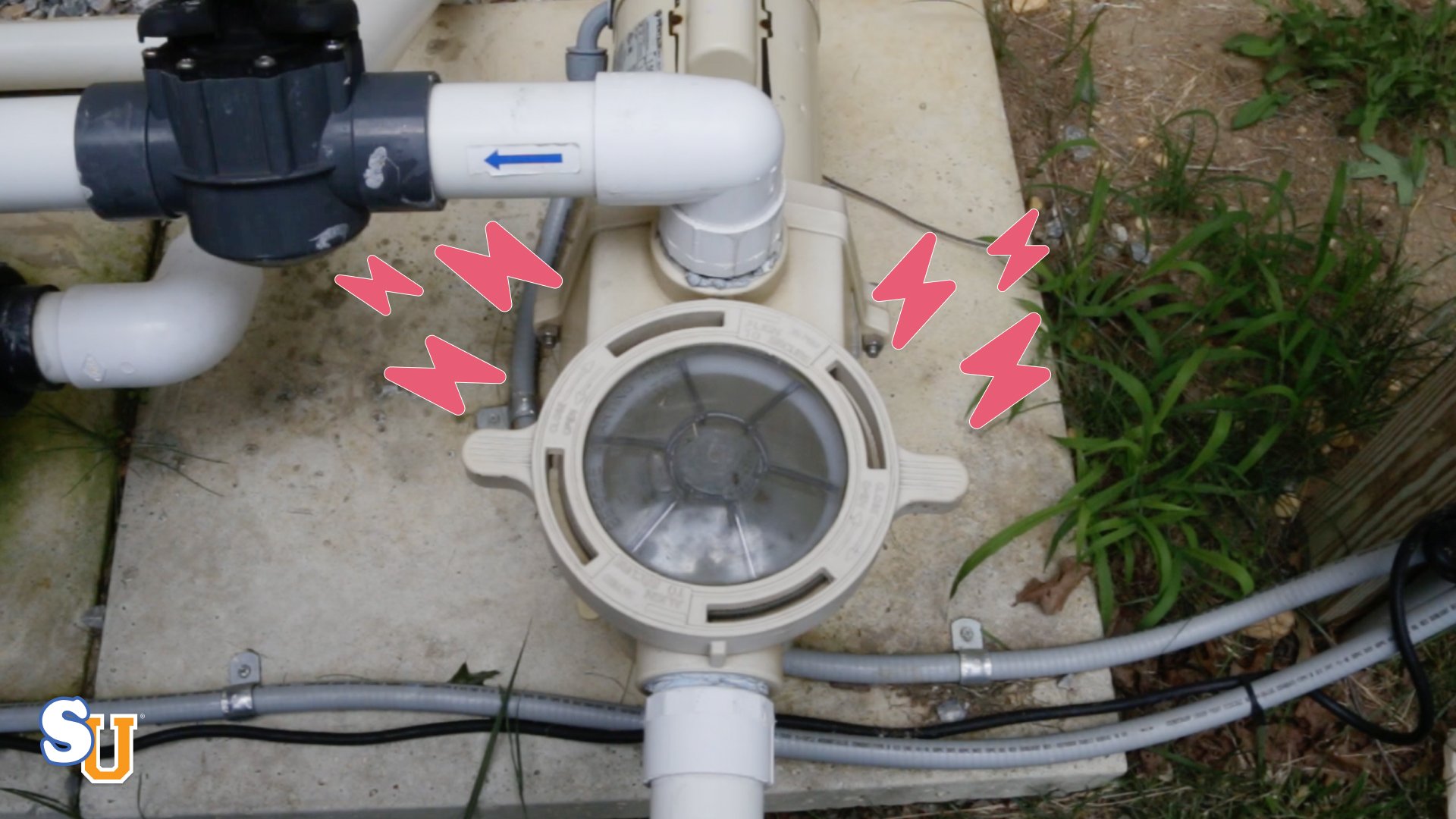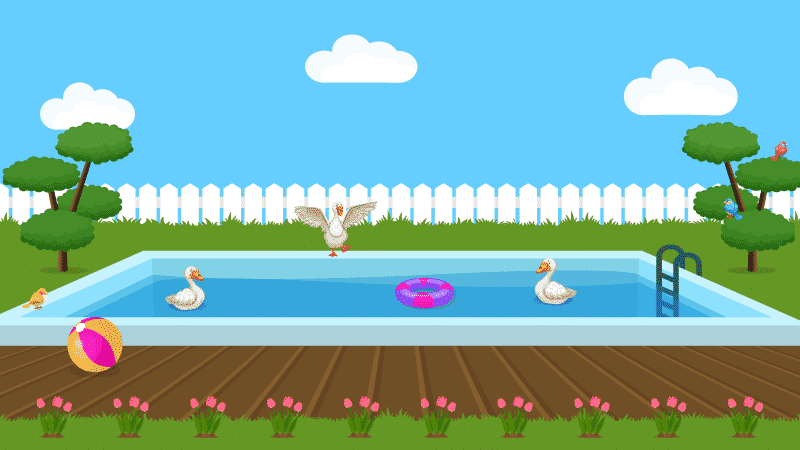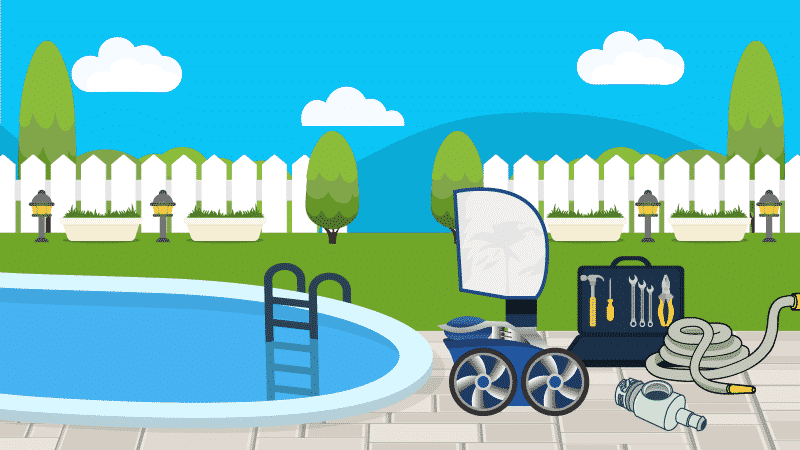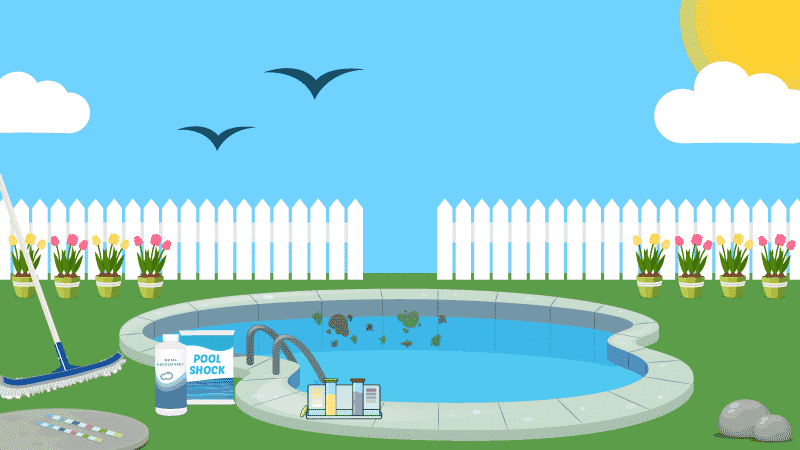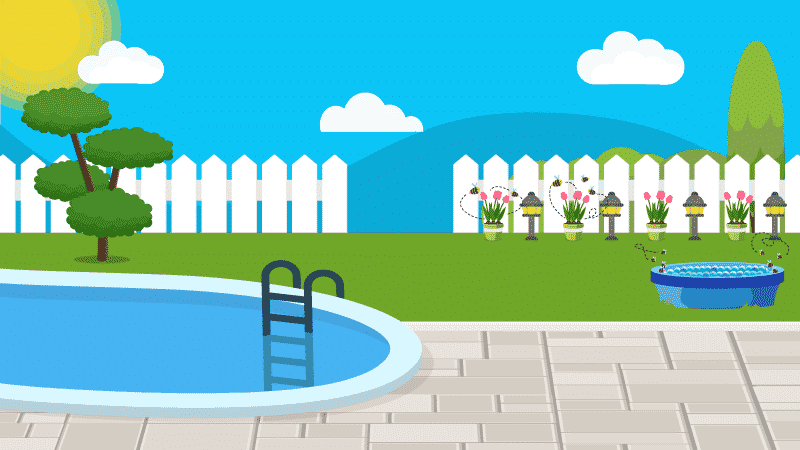Why Blond Hair Turns Green in the Pool and How to Fix It
We’re willing to be that being blonde during the summer isn’t so fun if you go swimming and your hair turns green from the pool. These days, lots of people dye their hair green on purpose, but those are usually lush, vibrant colors, not the dull, watery green that results from the pool.
You’ve probably heard that chlorine is the culprit. And if that’s true, there may be no way to avoid green hair since most pools are sanitized with chlorine. But we have good news: It’s not chlorine’s fault. Well, not totally. The key to fixing green hair is to understand why it happens. And that will also help you prevent it from happening again.
Stop wasting time and money with confusing water chemistry and maintenance. Our effortless system guarantees to keep your pool balanced, sanitized, and crystal clear all year. Works for all pools including saltwater.
Why Does Hair Turn Green From the Pool?
The answer is simple: copper.
You know how an old penny starts to turn green after years and years of being handled? Well, maybe not if you pay for everything with cards instead of cash. OK, here’s a better example.
You know the Statue of Liberty is green, right? Well, it wasn’t always. The statue actually has a copper exterior. When it was new, it was coppery and shiny. But after years of exposure to sea water and the elements, the copper oxidized and gained its famous green patina.
The same thing happens when copper is present in pool water. It oxidizes, and can turn certain things—the walls, the floor, your hair—green.
How Does Copper End Up in Pool Water?
It usually happens in one of three ways, or some combination thereof.
Your Water Source
If the water you use to fill your pool has a high copper content, you’ll also have copper in your pool. This happens most often with well water, but some municipal water sources can also have high mineral concentrations.
Algaecide
Copper is a well-known algae killer, so it’s often the active ingredient in algaecide. If you’re keeping your pool properly clean and sanitized, you shouldn’t have to worry about using an algaecide. But if you do, the potential for green hair is increased.
A copper-free algaecide to help prevent your pool from turning green.
Mineral Sanitizers
Chlorine isn’t the only sanitizer that can cause your hair to turn green from the pool. One of the active ingredients in a pool mineral sanitizer is copper, precisely for its algicidal properties.
Have any or all of these factors going on in your pool, and … hello green hair!
But How Does it Turn Hair Green?!
When the metal is exposed to the water and chlorine, it oxidizes. This is why you may sometimes end up with pool stains of a greenish color.
That oxidized metal then binds to the proteins in hair strands. So really, all hair can end up with oxidized copper in it. It’s just that it won’t show in darker hair colors. Because blond hair is so light, the green of the oxidized metal is visible.
Will Blond Hair Turn Green in a Saltwater Pool?
Yes. Salt water pools still use chlorine to sanitize the water, it’s just made from salt by a chlorine generator instead of being added manually as tablets or a powder.
If there’s copper in the water, and the chlorine created by the salt oxidizes it, your hair may turn green from the pool, just like it would in a regular chlorine pool.
How to Keep Your Hair from Turning Green Hair in the Pool
To keep the oxidized copper out of your hair, you’ll need to keep the copper out of the pool.
- Test your water source. Use test strips or a water testing kit to determine whether your water source contains copper. You can also take a water sample to your local pool store and have them test it for you.
- Use a hose filter. If there is copper in your water source, use a hose filter when filling your pool to keep as many minerals out as possible.
- Use a metal sequestrant. This water additive doesn’t remove metal from the water. It simply binds with the metal and prevents it from oxidizing. If you use a mineral sanitizer, you may want to skip the sequestrant. It may reduce the effectiveness of the copper component of the sanitizer. Check the manufacturers’ instructions for both the sequestrant and the sanitizer.
- Use a copper-free algaecide. If your pool develops an algae infestation, and you decide to use an algaecide during the treatment process, use one that doesn’t have copper as its active ingredient.
But what if you swim in someone else’s pool? Or a public pool? You don’t have any control over the water or chemicals there, so you’ll need to protect your hair.
- Wear a swim cap. OK, so they may not be the most attractive things in the world, but it’s the easiest and most effective way to protect your hair from turning green in the pool. It will also protect your hair from harsh pool chemicals.
- Use a leave-in conditioner. Applying this to your hair before you go swimming will coat your hair shaft, and make it more difficult for the copper to attach itself to your hair.
- Use apple cider vinegar. Rinsing your hair with this before you swim seals the hair cuticle, which can also make it more difficult for copper to attach itself and turn your hair green.
- Wash your hair immediately. As soon as you get out of the pool, wash your hair. Don’t let it dry first.
- Use swimmer’s shampoo. Take washing your hair an extra step by using a shampoo with a chelating agent in it.
- Use a hot oil treatment. After shampooing, before you go swimming, apply hot oil to your hair. It will seal the hair cuticle, protecting it from metals, and from drying chlorine.
How to Fix Green Hair
If your hair has already turned green from the pool, don’t worry. You don’t have to cut it or wait for it to grow out. You can try a few remedies.
- Use that swimmer’s shampoo. This is better as a preventive treatment, but if you weren’t able to wash your hair right after swimming, using a chelating shampoo on green hair may take some of the tint out.
- Use lemon juice. Citric acid is often used to clean copper pots and kitchen utensils. It gets rid of oxidation, and makes them shine again. Rinsing your hair with lemon juice may do the same thing for it.
- Use apple cider vinegar. Acetic acid is also used to clean copper, and it’s found in vinegar. Give your hair a good rinse with it, and you may see some, if not all of that green come out.
- Use ketchup. No, really. It’s not a joke. Ketchup contains both vinegar and acetic acid, so it’s a double whammy on that oxidized copper in your hair. But you can’t exactly rinse with it. Instead:
- Apply it as you would conditioner, working it through every strand of your hair.
- Cover your hair with a shower cap.
- Let it sit for 30 minutes.
- Thoroughly wash your hair. Then wash it again to make sure all the ketchup—and the copper—is gone.
- Apply conditioner.
- Rinse thoroughly.
- Caution: You may develop an intense craving for french fries during this procedure. We recommend a healthy dose of fries to alleviate this.
- Use tomato juice. It works on the same principle as ketchup, but is a little weaker, so you may need to do it more than once.
- Use baking soda. Don’t have any lemon juice or ketchup on hand? Mix ¼ to ½ a cup of baking soda with water to make a thick paste. Apply it to your hair, and massage it through every strand. Rinse it out, then wash and condition your hair. Baking soda isn’t as strong as acids, so you may need to do it more than once.
- Use aspirin. Not Tylenol (acetaminophen). Not Advil or Motrin (ibuprofen). And not Aleve (naproxen sodium). Just plain ol’ aspirin (Bayer).
- Crush six to eight tablets in a bowl. Better yet, in a mortar and pestle, if you have one.
- Add enough warm water to rinse your hair—less for short, more for long—and allow the aspirin powder to dissolve fully, stirring if necessary.
- Apply it to your wet hair, and let it sit for 15 to 20 minutes.
- Rinse, shampoo and condition as you normally would.
It’s Not Easy Having Green Hair
If all else fails, and your hair’s still a sickly green color, you always do have the last resort of cutting your hair and letting healthy blond hair grow back in its place. But with all of these precautions and home remedies, we’re thinking you won’t have to go that far.
Just remember to stock up on swimmer’s shampoo, lemon juice and ketchup at the beginning of the summer, and you’ll be fine.
Happy Swimming!
3 Ways We Can Help With Your Pool
- The Pool Care Handbook: An illustrated guide to DIY pool care, including water chemistry, maintenance, troubleshooting, and more.
- The Pool Care Video Course: You’ll get 30+ step-by-step videos and a downloadable guide with everything you need to know about pool maintenance.
- The Pool Care App: Enter your water test results. Get a custom treatment plan. Know exactly what chemicals to add to keep your pool clear.








